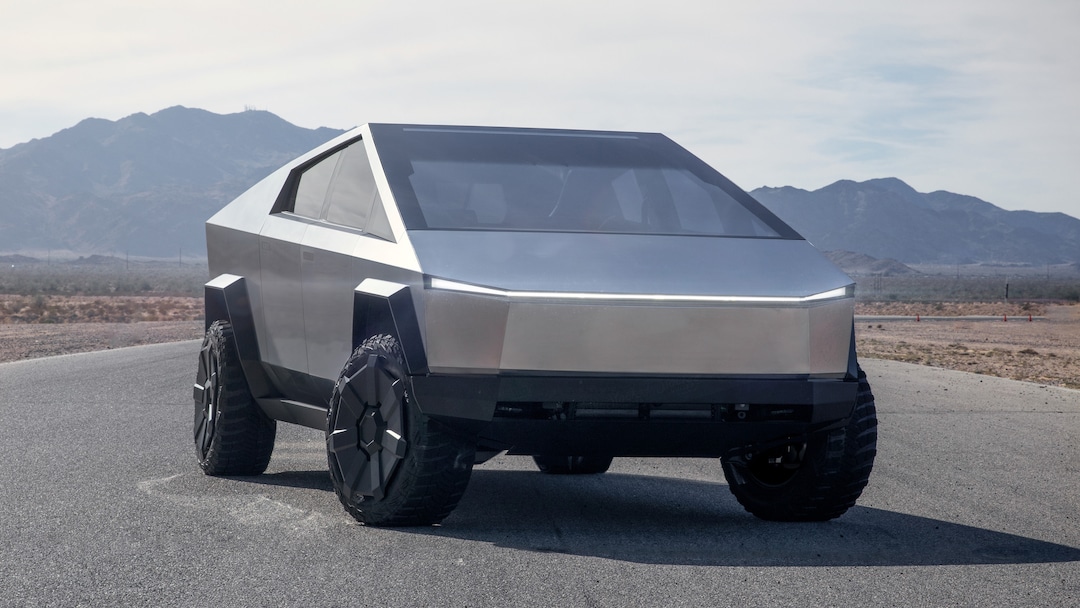Tesla Cybertruck Manufacturing Cost Analysis
In preparing our extensive coverage of Tesla’s highly disruptive Cybertruck, we noted its almost completely flat, 3mm-thick stainless body panels would save a bundle on tooling. Recently, I had the pleasure of serving on an Autoline Detroit discussion panel with Sandy Munro. His company, Munro & Associates, Inc. of Auburn Hills, Michigan, specializes in competitive teardown and analysis. A couple of years ago, we reported on Munro’s 6,000-man-hour study of the Model 3.
Tooling for 50,000 Cybertruck Bodies per Year
Sandy sees stainless-steel blanks entering the facility in different sizes, from which they are cut either via water jet or laser, with a preference for water to avoid altering the steel’s heat treatment. The blanks will then be manually handled and formed on press brakes or simple stamping operations before being structurally fastened through robotic TIG welding. There would be no major paint shop; parts requiring paint or corrosion protection would arrive pre-painted or powder-coated by the supplier. The forecast capital expense for 50,000 trucks is $30 million. Assuming five years of tooling amortization, that’s less than $200 per truck—a fraction of what manufacturers typically assume for marketing ($800/vehicle) and legacy costs ($600/vehicle).
Comparative Tooling Cost for 50,000 Conventional (F-150-type) Truck Bodies/Year:
Tools for handling rolls of steel coil stock, blanking dies, and stamping presses cost $25 million; a body shop with partial automation and multiple spot welders costs $35 million; and a paint shop can run up to $150 million. Total: $210 million.
Tooling for 600,000 Cybertruck Bodies per Year
If the Cybertruck gains significant traction, increasing production volume much beyond 100,000 units per year would require additional equipment. The need for blanking dies and automation will push expenses considerably higher. A small paint shop for parts adds another $60 million, bringing the total for Tesla’s Cybertruck to $125 million. In contrast, scaling up a conventional truck body requires a significant higher investment, estimating at $615 million.
Exoskeletal Design Cost
According to Sandy, the 3mm-thick steel body panels create an exoskeletal body structure akin to the fuselage of the Republic RC-3 Seabee amphibious airplane. This design represents a paragon of inexpensive manufacturing, costing significantly less than conventional designs. Sandy envisions crash absorption capabilities in the Cybertruck’s design, although exoskeletal structures can be more costly to repair.
Weight Comparison with Traditional Steel Unibody Structure
While specific weight comparisons are unavailable until a Cybertruck is examined, Sandy previously designed a small aircraft that employed an exoskeletal fuselage, which ultimately weighed less than similarly sized aircraft constructed from common methods.
Thoughts on the Body Design
Sandy’s evaluation of the Tesla body design notes its simplified pillars and flat floor, ideal for integration with the skateboard chassis. However, he identifies certain design aspects, like sharp angles, that could introduce stress risers. Nonetheless, the overall aesthetic aligns with the Cybertruck’s bold style.
About that Flat Glass
Flat glass pieces are cheaper to produce compared to curved ones and facilitate easier head-up display implementation. Sandy underlines the implications of the recent glass test, suggesting that advanced materials may have contributed to the observed performance, potentially impacting safety protocols for first responders.
Where Should Tesla Build it?
The Fremont plant is at capacity, and constructing it in China or Germany incurs additional taxes. Sandy advises reallocating some production tasks to the Gigafactory to optimize logistics and reduce costs.




